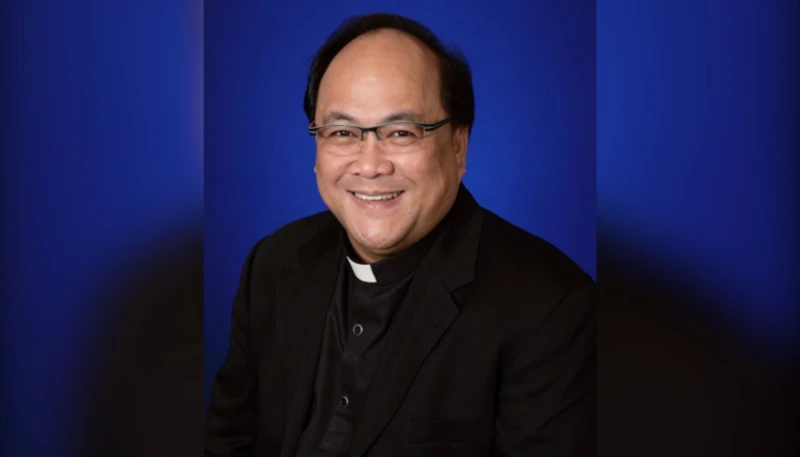AURORA, Ill. (RNS) — Marcos Hernandez says he has spent most of his life running.
Mostly trying to get away from God.
“I’ve been running from him — running with the devil,” says Hernandez, a resident of Wayside Cross, a Christian recovery center and shelter in the Chicago suburbs.
These days, Hernandez, who says he is four years sober, is running for a different reason. If all goes to plan, he and seven other Wayside Cross residents will toe the line at the Fox Valley half-marathon in St. Charles, Illinois, in a few weeks — with hopes of finishing the 13.1-mile race.
For the past two months, Hernandez and other residents have been waking up at 5 in the morning, three days a week, as part of Up and Running Again, a national program that helps residents of homeless shelters and rescue missions train for half-marathons. Since 2010, more than 1,300 participants have finished a half-marathon through the program, which has partnerships with nonprofits in 10 locations, from Washington state and Los Angeles, to Knoxville and Aurora.
The idea is to use running and friendship as tools for transformation, said the Rev. Bruce McEvoy, a pastor and avid marathoner who serves as a volunteer coach for the program.
“Together we can do hard things,” McEvoy said, who has run 35 marathons and hopes to run one in every state.
The program is simple but intense. For 12 weeks, participants like Hernandez run three days a week — two shorter runs on Tuesdays and Thursdays, followed by a long run on Saturday. Participants are paired with volunteer coaches who give tips and motivation while running side by side.
“When you’re running shoulder to shoulder, you’re sharing life with one another,” said McEvoy, the pastor for local and global impact at Chapel Street Church, an evangelical congregation with four locations in Chicago’s suburbs. The church has long had ties to Wayside Cross, a nearly century old riverfront shelter and recovery center in Aurora, founded as a result of an evangelical crusade by baseball player-turned-preacher Billy Sunday in 1927.
RELATED: Fauja Singh, world’s oldest marathon runner, showed us how to persevere with joy
Most of the people Wayside Cross works with have dealt with addiction and homelessness. The program provides food and housing for free. Residents are required to attend classes and chapel and to have a job — first for the ministry and then outside.
Four years ago, McEvoy approached leaders at Wayside Cross about starting the running program after a friend at church told him about it. They jumped at the idea, he said.
This year’s group started back in June with about 13 runners. By early August, the midway point of training, eight were left. On a summer afternoon, the remaining runners gathered in a classroom at Wayside Cross to talk about the experience. The day before, they’d all gone to a store to be fitted with new shoes, paid for by Up and Running Again. The program will also pay the race entry fee.
Will Dominguez, 42, said he was already surprised at how far the group had come. The first few runs were difficult, and Dominguez found himself out of breath much of the time. But a volunteer running coach gave him some tips that helped. And the more he ran, the better he felt. “Before I know it, I’m running five miles and looking forward to running,” he said.
Nick Adams, 21, said he has also seen benefits. He’s dropped 30 pounds in the few months since he came to Wayside Cross and started running. Dressed in a blue Up and Running Again T-shirt, he also recounted seeing deer and other wildlife along the Fox River Trail, where most of the group’s runs are held.
“A coyote ran in front of me the other day,” he said.
Perhaps the fastest runner in the group is James Milschewski, 32, who has been at Wayside Cross for five months. He enjoys the camaraderie of being with the other runners. But he’s not a fan of the runs.
“I told myself I was not going to enjoy doing this,” he said. “And that’s held true. I do not like getting up early to do it.” Still, he said he signed up for training because he wanted to challenge himself and do something hard but necessary.
Tom McCall, a longtime Wayside Cross resident, is back for his third year.
McCall, who began running in prison, qualified for the Boston Marathon earlier this year, where he ran a personal best of 3:09:37. McCall, who spent six years in prison before coming to Wayside Cross at the end of 2022, is currently training for the Chicago Marathon. He now lives in a discipleship house owned by the ministry and has become one of the coaches.
Running with the group has helped him with his marathon training, said McCall. Because they are slower, he’s forced to take his time. His runs with the group have become what he calls “recovery runs” from his marathon training.
“Helping these guys helps me,” he said.

McCall said he knows the challenges the other runners face — particularly when starting out. Although he had been running in prison, McCall said he’d lost most of his fitness progress during COVID, when he and other prisoners were locked down. Then, after his release, he came to Wayside Cross, where residents are required to stay on campus during their first few months.
By the time he started running again, it was mid-January 2023 and freezing outside. He barely made a mile during his early runs. “It was a lot easier just to quit,” he said. “But I went ahead and started over again.”
McCall said that, if they stick with it, the other runners will learn what he’s learned from running.
“I know anything worth having is hard work,” he said.
On the night before the race, the runners will gather for dinner with friends and family. That event will be a celebration, said Up and Running Again founder and Chief Running Officer Steve Tierney, and a chance for runners to receive affirmation for what they have accomplished in getting to race day.
“Everyone has a good time,” he said. “And it’s just so healing.”
Tierney, a CPA from Southern California, said he’s been surprised at the program’s success. He started running in 2008, with the help of a marathon training guide for people who had never run before. The book advised that newcomers start by alternating walking and running and slowly building up from there. Before he knew it, he was running long distances.
“It was the most amazing thing ever,” he said. “Each week, I was telling myself, I’m doing something I had never done before. How often do you get to tell yourself that?”
He began to wonder if other people could benefit from a similar experience. Before long, he was proposing starting a running program at Orange County Rescue Mission, which became a success.
Being involved in Up and Running Again changed his life, said Tierney. It got him out of what he called his “Christian bubble” and allowed him to rub shoulders with people from all walks of life. It has also made him more empathetic with those who have experienced addiction or other struggles.
“I would say that we are all one or two mistakes from being in the same position,” he said.
At Wayside Cross, the runners were looking ahead to race day, knowing they’d get there by showing up one day at a time. “I want to cross that finish line,” said Dominguez, drawing inspiration from a famed Bible verse. “Just finish the race.”
RELATED: Marathon ministry trains runners to put ‘one foot in front of the other’
 […]
[…] Even off-peak moments offer infinite spiritual opportunities.
Even off-peak moments offer infinite spiritual opportunities.


